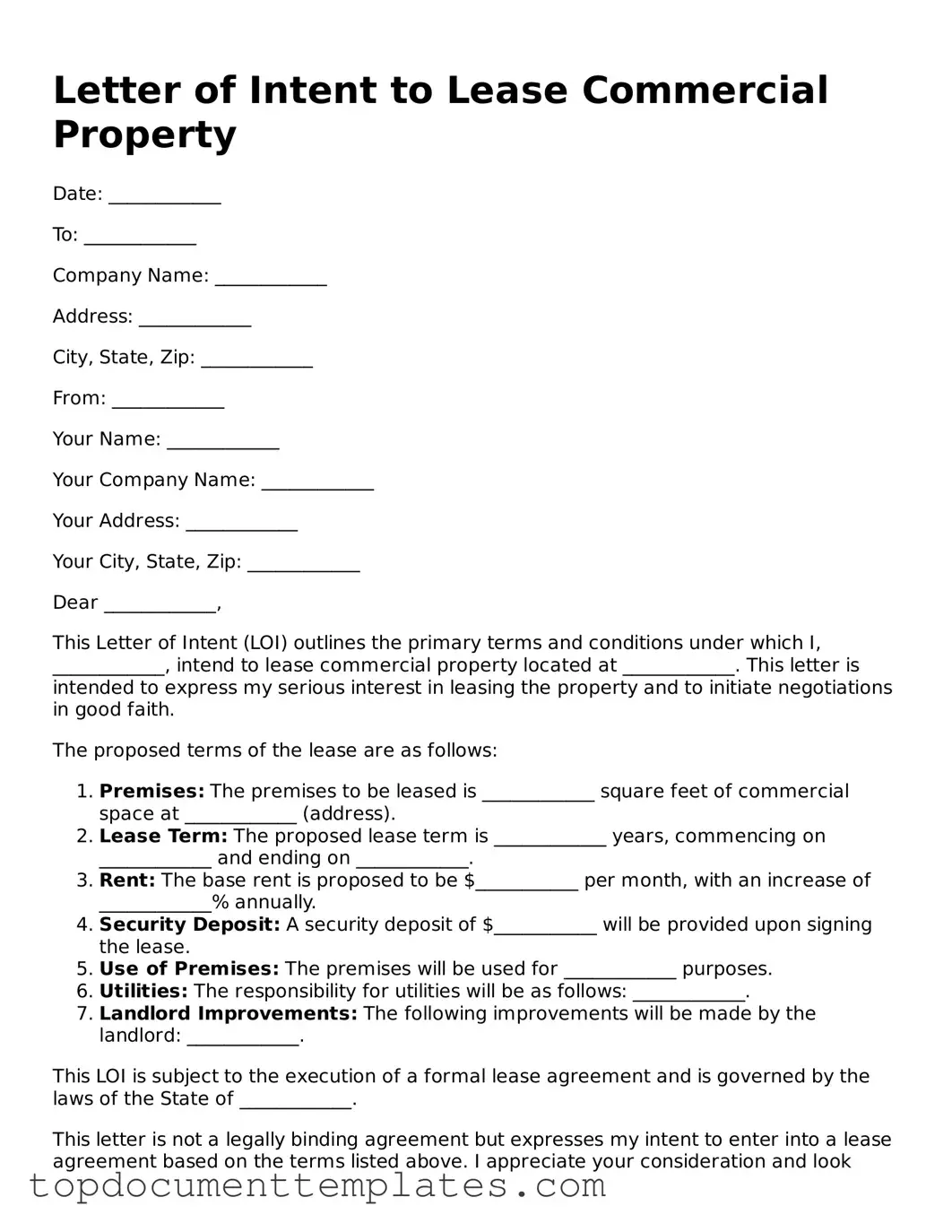Official Letter of Intent to Lease Commercial Property Template
A Letter of Intent to Lease Commercial Property is a preliminary document that outlines the basic terms and conditions under which a tenant intends to lease a commercial space. This form serves as a starting point for negotiations between the landlord and tenant, helping to clarify expectations before a formal lease agreement is drafted. To begin the leasing process, consider filling out the form by clicking the button below.
Open This Form
